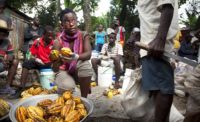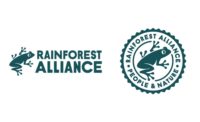At-a-Glance: Nugali
Headquarters: Pomerode
Founder: Ivan Blumenschein and Maite Lang
Products: Dark Chocolate 80 percent Serra Do Conduru Bar - 3 Oz, Milk Chocolate With Brazil Nuts Bar - 3.5 Oz, Dragée Chocolate Covered Strawberries - 4.6 Oz, Dragée Chocolate Covered Macadamias – 4.6 Oz, Dragée Chocolate Covered Cocoa Nibs – 5.3 Oz, Sugar Free Milk Chocolate Bar - 1.4 Oz, Sugar Free Dark Chocolate 70% Cocoa - 1.4 Oz, Sugar Free Dragée Chocolate Covered Almonds - 4.6 Oz, Hot Beverages Tablets (Hot Chocolate, Capuccino, Xocoatl) - 7 Oz And Assortiment De Chocolats (Dark, Milk, White And Gianduia Chocolate Tablets) - 8.4 Oz.
Website: www.nugali.com.br
It’s no secret in Brazil that its cocoa fields are still in a sort of recovery mode.
While it wasn’t that long ago that the country had a booming cocoa growing business, tragedy struck the region’s cocoa pods at the end of the last century. A fungus called Witches’ Broom ravaged the cocoa fields, and between 1980 and 1990, Brazil lost more than two-thirds of its cocoa production.
While the South American country isn’t anywhere near the production levels it was at before the plague, a variety of chocolate makers are working to help farmers grow sustainable cocoa in the Amazon, and reclaim Brazil’s rightful place in the world ranking of cocoa suppliers.
Farmers like João Dias Tavares Bisneto, who owns the Leolinda cocoa farm in the state of Bahia are among those willing to put in the hard work, and constantly innovate to keep up with the world market.
While he supplies cocoa beans to the big guys in the cocoa market, such as Barry Callebaut and Cargill — both of which have processing facilities down the road from his farm — he also works with smaller chocolate makers.
And it’s his intimate relationship with such chocolate makers — like Ivan Blumenschein, founder of Nugali Chocolates — that can truly set an end product apart.
Blumenschein and Tavares are a team, and they follow the entire process together to ensure the richest notes and the most delicious chocolate.
It all starts on Tavares’s farm, with how he plants the cocoa seeds. All of his cocoa trees are planted within the jungle’s natural habitat, so as not to disrupt the terrain — environmental sustainability in its purest form.
Then, once the pods are picked off the trees and the seeds are scooped out, they are fermented. But here too Tavares does things differently. Instead of using the typically shallow square fermenting boxes, he uses barrels to ferment the cocoa beans.
The rounded edges of the barrels means that none of the beans end up in a corner, which results in a more even fermentation.
“With circles you don’t have the variation in the temperatures,” Tavares explains.
The barrels also don’t have the traditional holes used in the fermenting boxes. Instead, there are gaps between the pieces of wood on the bottom, which he believes helps the pulp drain better.
The cocoa beans stay in the barrels for five to seven days, during which they reach a temperature of about 120 degrees. Throughout the process the beans are also stirred every two days to make sure they’re fermenting evenly.
Tavares believes that all this attention to detail pays off in the final product, and that Brazilian consumers are finally starting to learn the difference between quality chocolate and more everyday chocolate.
Going one step further, as someone who nearly has cocoa running through his veins, Tavares takes all the various notes of the cocoa beans very seriously. He says each batch of beans has a different flavor and different notes, and, the next step is educating consumers on these differences.
“In the future, when you see a chocolate bar, it will be just like wine,” predicts Tavares. “Because it’s very rich.”
After the beans are fermented, they’re laid out on in sun to dry for about a week. He says that some companies use smoke to dry the cocoa beans if it rains, but that affects the end flavors. So, his are dried in what are essentially large green houses, featuring large white coverings that protect the beans.
When the beans are finally ready to be sold, they are either purchased by a large cocoa processing company in the area like Cargil, or, if they’re higher quality beans, they’re sold for a premium to chocolate makers like Blumenschein with Nugali.
Blumenschein founded Nugali chocolates in 2004 with his wife Maite Lang after traveling the world as an airplane engineer and realizing that Brazil didn’t have its own quality chocolate like other countries did. His friends and family would constantly ask him to bring back chocolates from around the world, like Valrhona or Amedei, and he realized one day that he could make a quality chocolate right in his own country.
“It started as a joke,” he recalls. “But we started looking a little deeper, and it has always been a dream for us to start our own business.”
So, the couple read everything they could about chocolate, dipped into their savings, and started Nugali.
Founded in the city of Pomerode, Brazil, the chocolate company is still one of only a few brands in Brazil that manufactures bean-to-bar chocolate.
And they don’t just rely on gourmet cocoa. The company also uses natural vanilla and pure cocoa butter, and of course only all-natural ingredients.
Nugali has worked hard to create a wide selection of bars with those ingredients. Currently the company offers: Milk chocolate, dark chocolate 70 percent, white chocolate, cocoa blossom 70 percent, a nut bar, a hazelnut bar, and a sugar-free bar milk chocolate bar, and a sugar-free 70 percent cocoa bar, among others.
The sugar-free bars are sweetened with Thaumatin, a natural fruit sweetener that leaves no after tastes.
“We wanted to give it the feel of real chocolate,” Blumenschein says.
With all these premium ingredients in Nugali chocolates though, the end product does tend to be more expensive than other chocolates on the market in Brazil. But the couple knows it’s worth it.
“It is possible to make bad chocolate using good ingredients, but it’s not possible to make good chocolate unless you have good ingredients,” Blumenschein explains.
However, the higher prices does mean that Blumenschein and his team have to work hard to educate consumers on the differences between Nugali chocolate bars and other chocolates.
“The quality market is stricter, but the consumer is more loyal,” Blumenschein says. ”You also have to be extra careful not to disappoint this consumer.”
Many of Nugali’s products are dark chocolate, which has also been an up-hill battle in Brazil.
“The taste for dark chocolate has been evolving here,” Blumenschein insists. “But Europe is still a couple of years ahead of Brazil.”
And speaking of Europe, Nugali’s next step is exporting.
“We know this is tough. That there is tough competition,” he says.
The company also is planning to build a $4 million new plant, slated to open in early 2016. The factory will allow for public tours, which is just one more way for Blumenschein to educate the public about his product.
And with all the high quality ingredients he uses, they’re sure to be impressed.

















